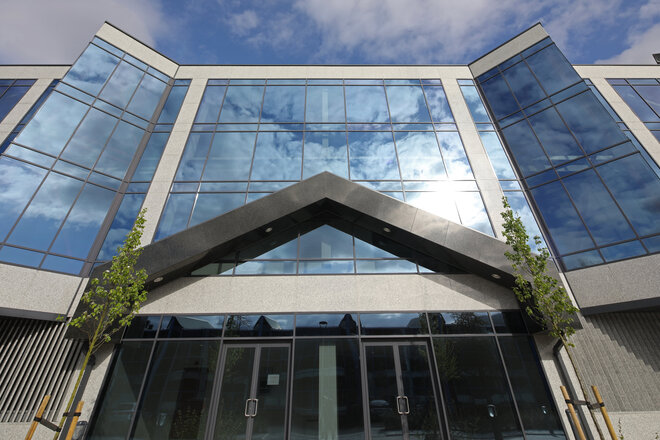
When it comes to making an entrance, the devil is in the detail. The need to balance design briefs with stringent safety, security and accessibility requirements can present a number of challenges, especially when multiple door types are often needed on the same project. In our latest blog, we explain why sourcing different commercial door systems from a single supplier doesn’t just offer a logistical advantage, but can provide tangible benefits across the full building envelope.
Bringing performance and design together
The best commercial door systems strike a balance between form and function. Some will be tasked with creating a strong first impression, others with providing secure emergency exits or withstanding frequent, daily use in busy high-traffic areas. The varied demands of these spaces mean that no single door type will meet every need.
This is where flexibility of the choice of door system becomes essential. The ability to specify a mix of commercial door types, from automatic entrances to robust manual doors, low-threshold options and sleek bi-folds and sliding doors, means that each area of the building can be tailored to its specific use without compromising on aesthetics or performance.
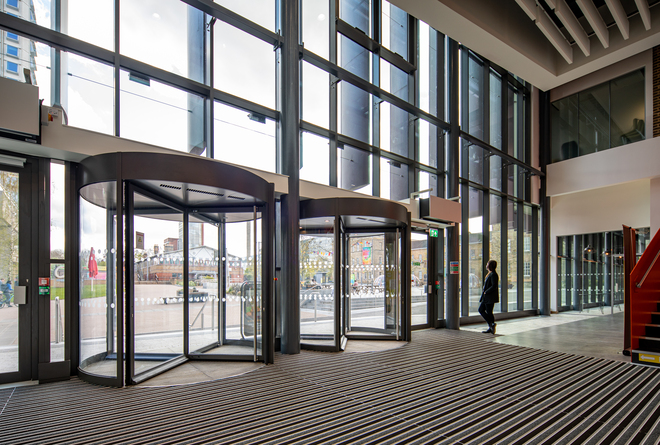
Where multiple door types are required within the same project, particularly when they form part of a larger fenestration package of windows and curtain walling, working with a single, experienced supplier can offer major benefits. Not only does it reduce the risk of incompatibility between different systems, which can affect performance and cause installation delays, but it provides a single point of accountability. Essentially, this provides reassurance around warranties and aftercare by keeping everything with one supplier.
The use of complementary aluminium systems and co-ordinated hardware, handles and other fixtures and fittings, can also create a more unified aesthetic across different elevations and entrances. Taking this type of holistic approach is a key way that specifiers can ensure that all doors, whether these are used as high-traffic entrances or secondary access points, are appropriate for the building’s use and accessible to all.
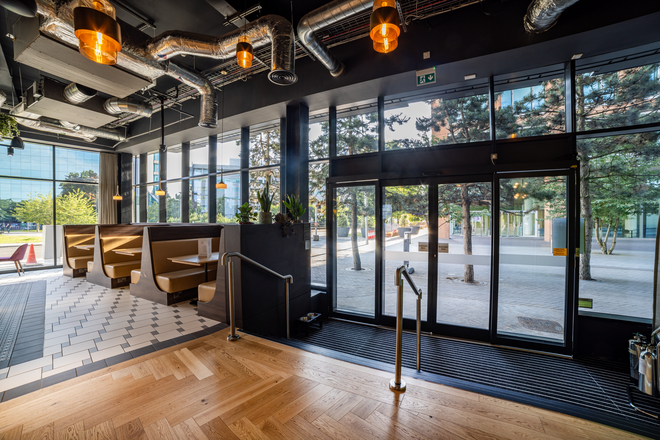
Inclusive designs
The choice of commercial doors also plays a vital role in creating buildings that are accessible to all users. Considerations include door width, opening mechanism, threshold height and visibility and here, close and early engagement with both the product manufacturer and specialist contractor who is fabricating and installing the system can make a huge difference. For example, opting for large glazed panels, made possible by the inherent strength of the aluminium frame of these types of doors, can help aid navigation, particularly when combined with contrasting frame colours and accessible ironmongery.
Similarly, choosing automatic operation can also assist those with limited mobility, as can the specification of low thresholds. In schools, healthcare buildings or other high-traffic facilities, the specification of anti-finger trap stiles, although not a legal requirement, also demonstrates best practice. The use of BIM further streamlines this process, improving coordination and supporting compliance from the outset.
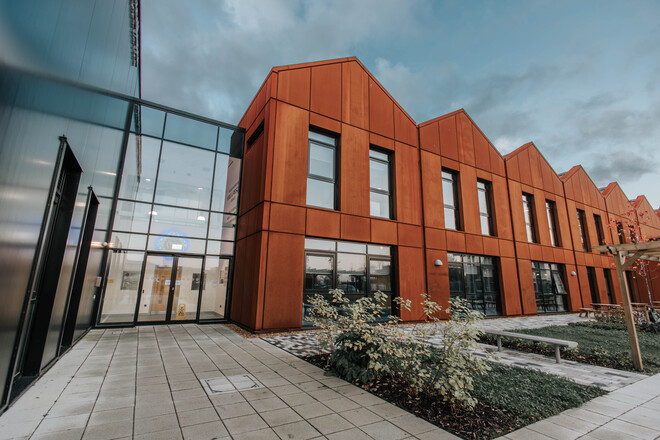
Security first
Security is another vital factor that specifiers must address when selecting commercial doors, particularly in buildings that require controlled access or added protection for occupants, such as schools, hospitals and retail premises. Commercial aluminium door systems that can support PAS 24 and Secure by Design standards offer enhanced resistance to forced entry without compromising on aesthetics, ensuring that safety and ease of operation can go hand in hand.
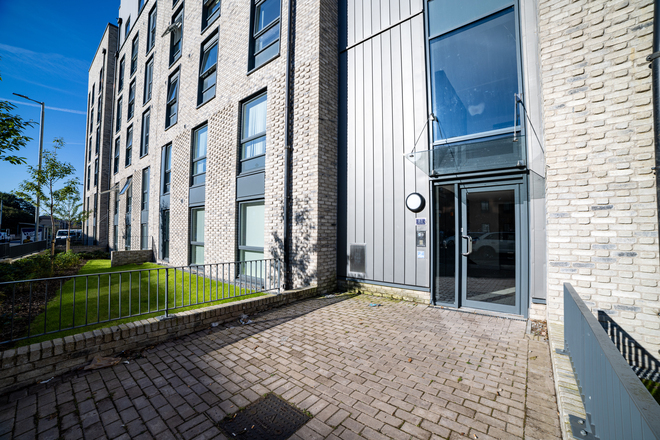
The advantages of aluminium
Aluminium has become the material of choice for commercial door systems, and for good reason. Its inherent strength allows for wider and taller openings, supporting larger glazing panels that offer slim sightlines and greater visual transparency which are ideal for modern buildings that prioritise and embrace the principles of biophilic design and the greater use of natural light.
In terms of durability and longevity, aluminium is hard to beat and as it is resistant to both corrosion and weathering, it can be endlessly recycled. Critically, aluminium door systems now also offer excellent thermal performance and following the introduction of stricter U-values targets in line with Part L of the Building Regulations, energy efficiency and high insulation performance are no longer optional extras. Aluminium systems can meet and exceed these requirements, helping support broader sustainability goals such as improving BREEAM ratings, whilst saving energy costs.
Ultimately, effective commercial door specification comes down to balancing aesthetics, performance, and practicality, and by unlocking the technical expertise within the supply chain, this process can not only be supported but streamlined.

Comments are closed.